The tulip edition
A little bit of April frivolity
I've been trying to write a serious piece tying tulips, suburban gardening, and left wing authoritarianism together. I've wasted a lot of time on it, and it just isn't working. (I know, right?) Obviously the universe is trying to tell me something, which is probably “just focus on tulip photos and make it easy on yourself.” We are experiencing a second flood, hot on the heels of last week's flood, but I've already milked that subject for all it's worth, so here is the Turtle Paradise Tulip Edition.
It has come to my attention that some gardeners consider tulips to be worthless wastes of space because they serve no ecological function. They just sit there like vibrant color pops in the landscape, forming no relationships with native organisms. White-tailed deer and various rodents happily munch them, but that doesn't count since we're usually trying to discourage those animals. Mainly tulips fulfill the needs of humans.
I value tulips because they are beautiful. The emergence of the thick green foliage even as freezing temperatures grip the earth, and the astounding colors that follow, provide a boost to mental health after a long gray winter. Importantly — defying the laws of physics — they can occupy the same space as other plants. The same is true for other bulbs and spring ephemerals. The bulbs nestle among the roots of coneflowers and butterfly weeds, in no way impinging upon their health, and their flowers and foliage fade away just as the summer perennials are taking off.
A case could be made against tulips based on the chemicals needed to propagate them. I'm not familiar with the details of tulip farms, but judging from the vast acreages like the one pictured in the stock photo below, fertilizer and herbicide use would not be insignificant. This is a monoculture and no doubt has all the problems associated with growing millions of individuals, each closely related to the others.

The main quibble with tulips seems to be their do-nothingness. They provide no pollen or nectar for foraging insects. They do not act as host plants for butterflies. Though it's possible they were originally cultivated for medicinal or culinary uses, today they are valued purely as ornamentals. This puts them directly in the sights of those who feel each plant should serve a purpose.
In the small urban or suburban yard, space is limited. A clump of tulips might be condemned for taking up valuable real estate that could otherwise be occupied by a native or edible plant. In mid-size landscapes this is hardly an issue, as they can be grown in the midst of other plants as mentioned above.
I think it's safe to state that no one will ever have a problem with tulips being too aggressive. It is possible that they might slowly spread to cover an area, but this has never occurred in my garden. The fact that rodents relish the taste of the bulbs means it's more likely that they will gradually disappear. Unlike daffodils, which pop up here and there all over the property including woods and wetlands, tulips are rarely seen outside of cultivated areas.
Not only do tulips just sit there doing nothing, the flowers don't last long either. One must pay attention and visit the garden regularly in order not to miss the show. The late tulips especially will fade quickly if their arrival coincides with the onset of hot weather. The variety pictured below, blooming as I write, will be gone shortly as temperatures are now climbing regularly above 80 degrees.
I'm drawn to the garden often to check tulip status, but often end up pulling a few weeds or pruning a bit. So if you're looking for reason to justify planting them — though don't you need one — this might do the trick. They will lure you into getting something done, even when you have no intention of working. They are small, colorful beacons reminding you to get outside, tend to plant needs, and enjoy the view.


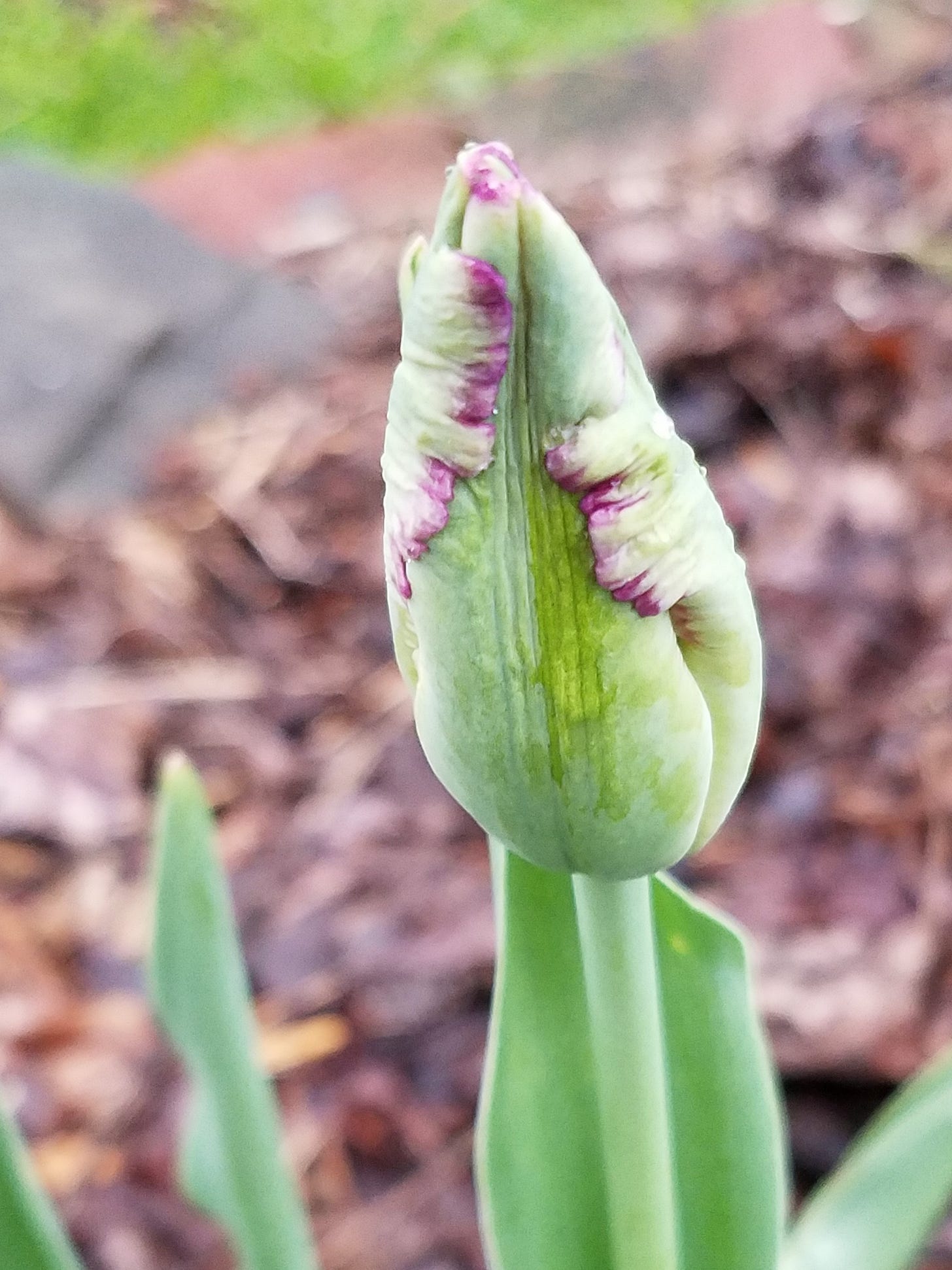


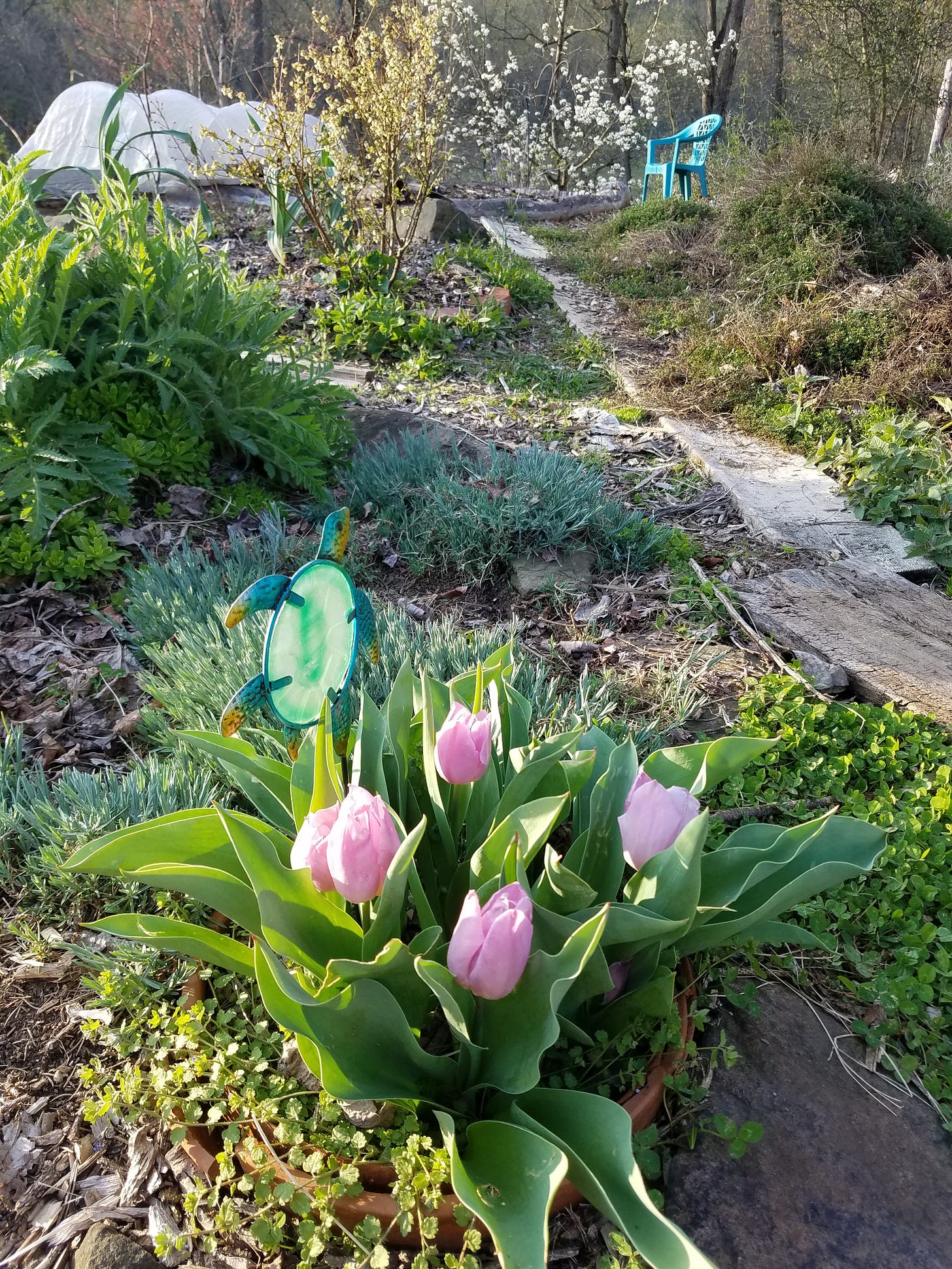
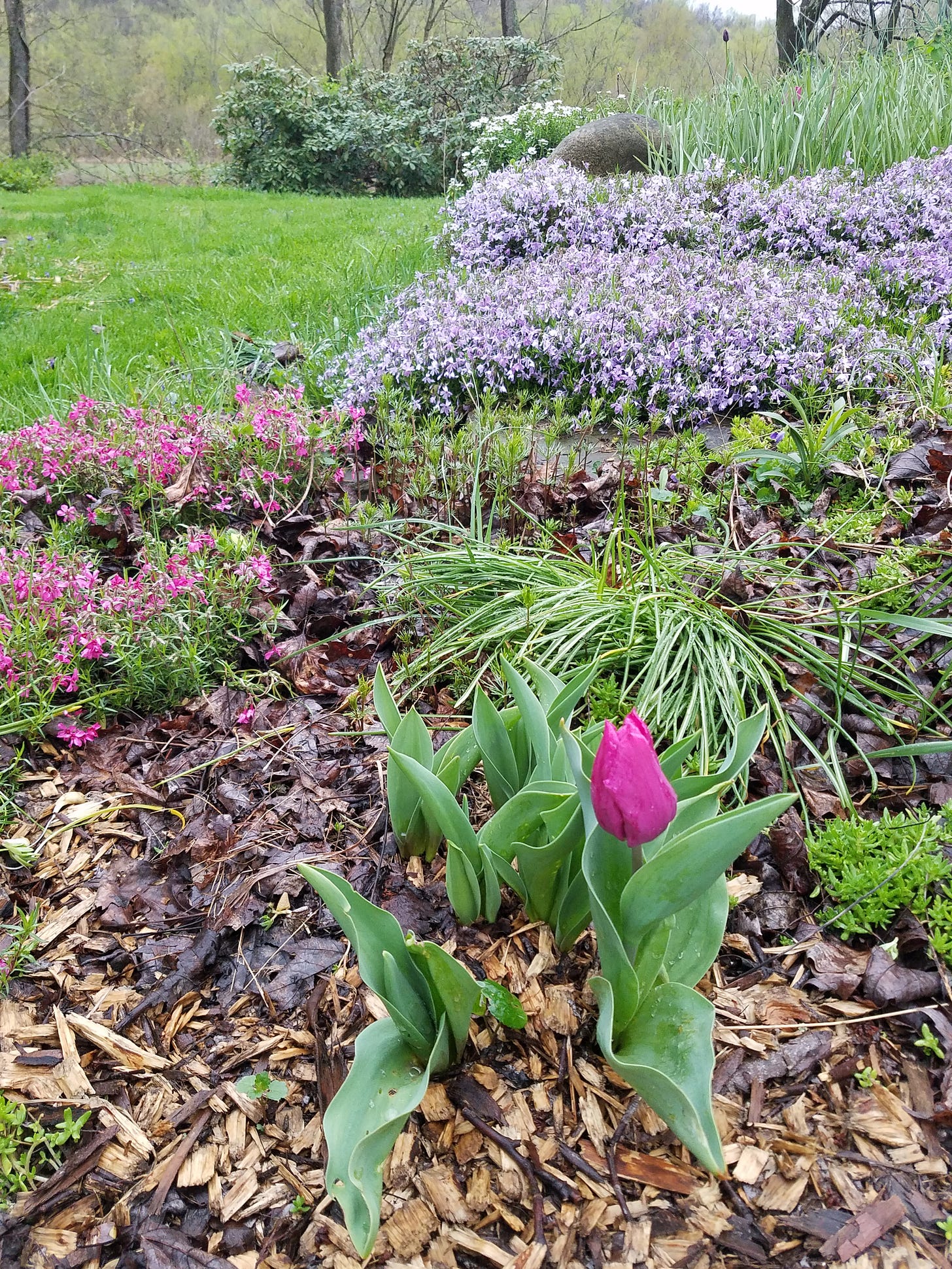

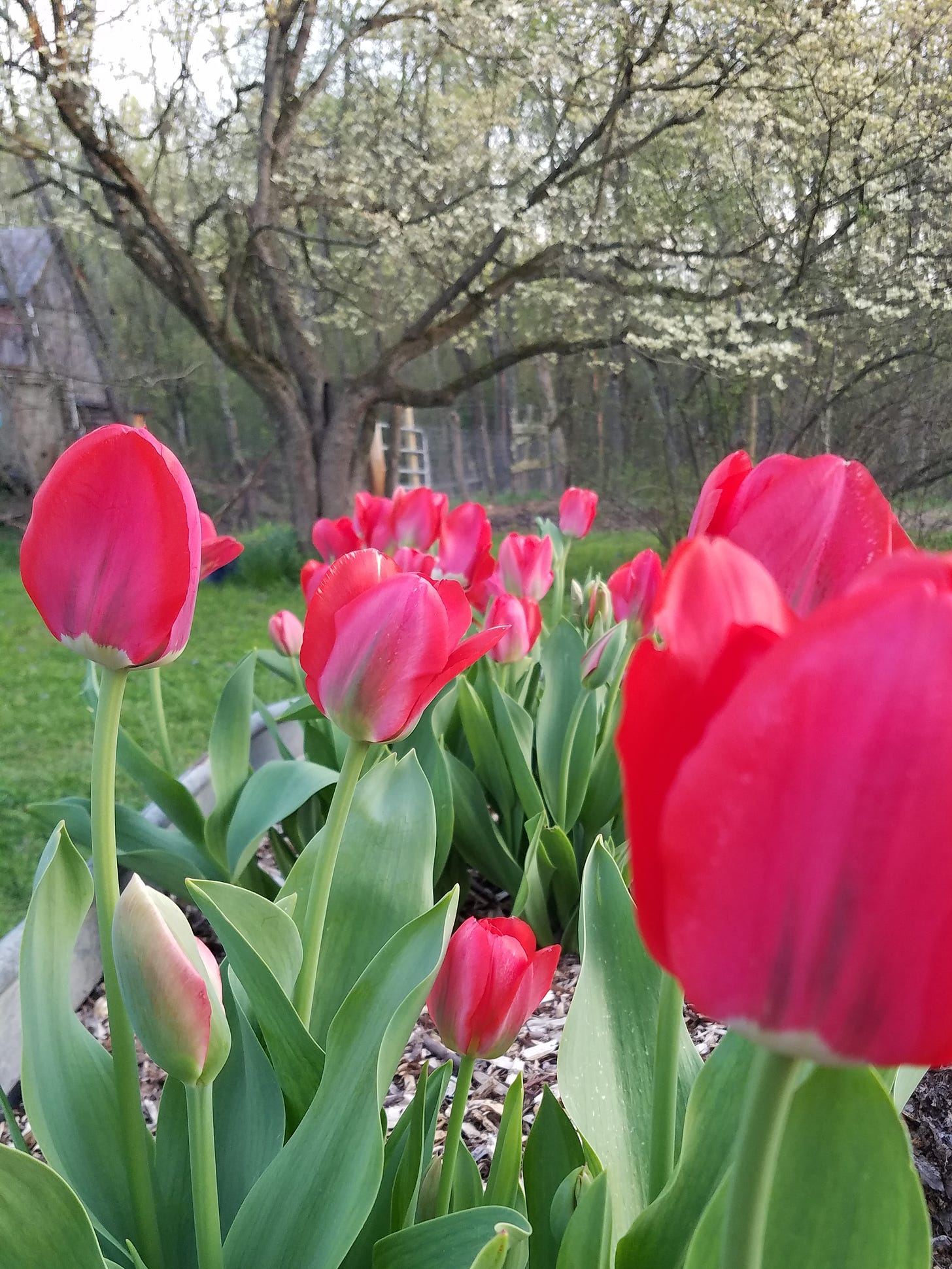
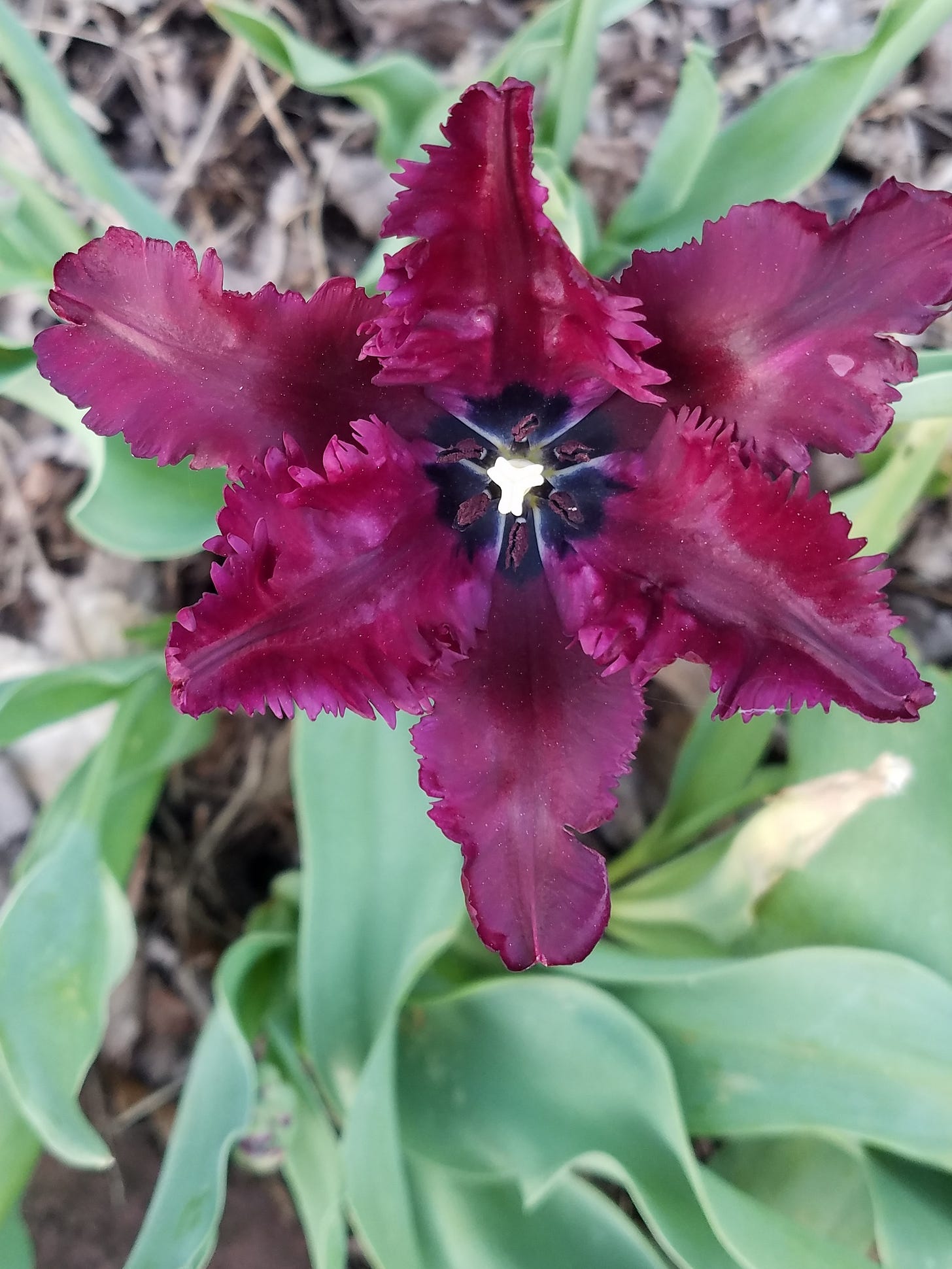
Wow...80 degrees in mid-April in Ohio? That surprised me. I love tulips. Lovely photos.
I did not know that tulips were useless, that insects shun them, or that they provide no benefit besides being pretty. I did not know that but it seems appropriate since this is the flower that caused the speculative market crash in Holland in the 17th century, a time when huge fortunes were lost during the "tulip mania." Among minerals, the one that is famously the object of speculative greed is gold. How many lives have been ruined by a lust for gold? Gold among the common metals is probably the most useless. Nothing particularly useful is made of gold. No tools or weapons or machines or any utilitarian object I can think of is made of gold. It's useless but it's pretty, it's molded into jewelry or it's used as a decorative coating on things made of base metals or wood. So it's interesting, and it makes weird kind of sense, that very valuable things need to be useless. This may be true of people as well.